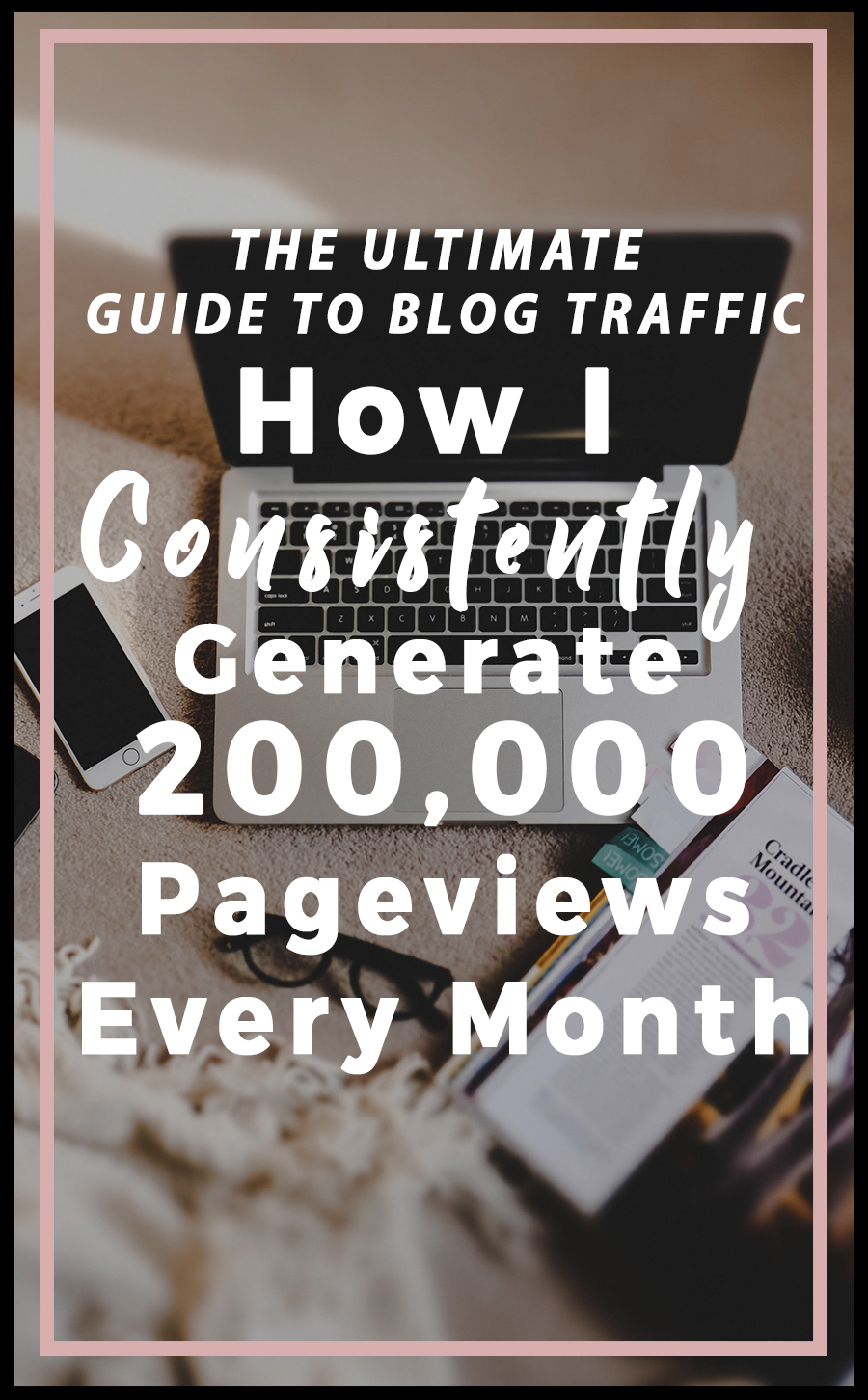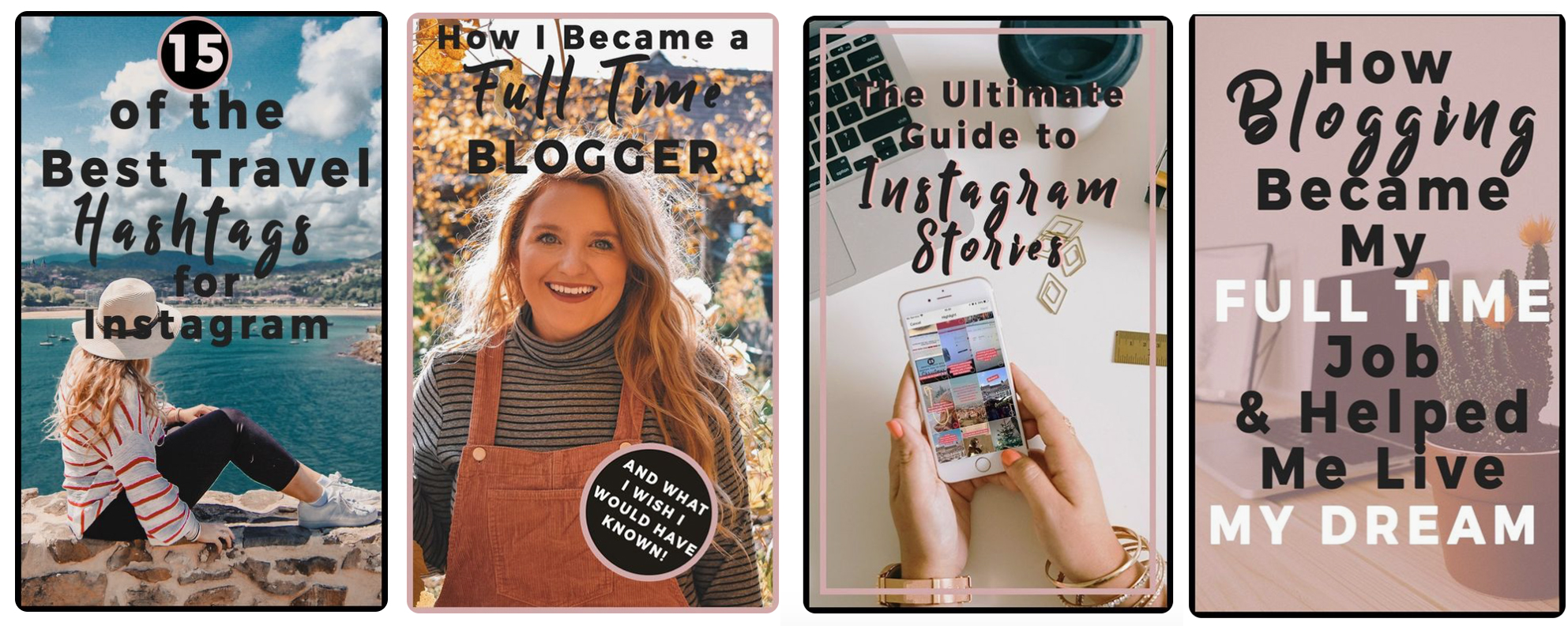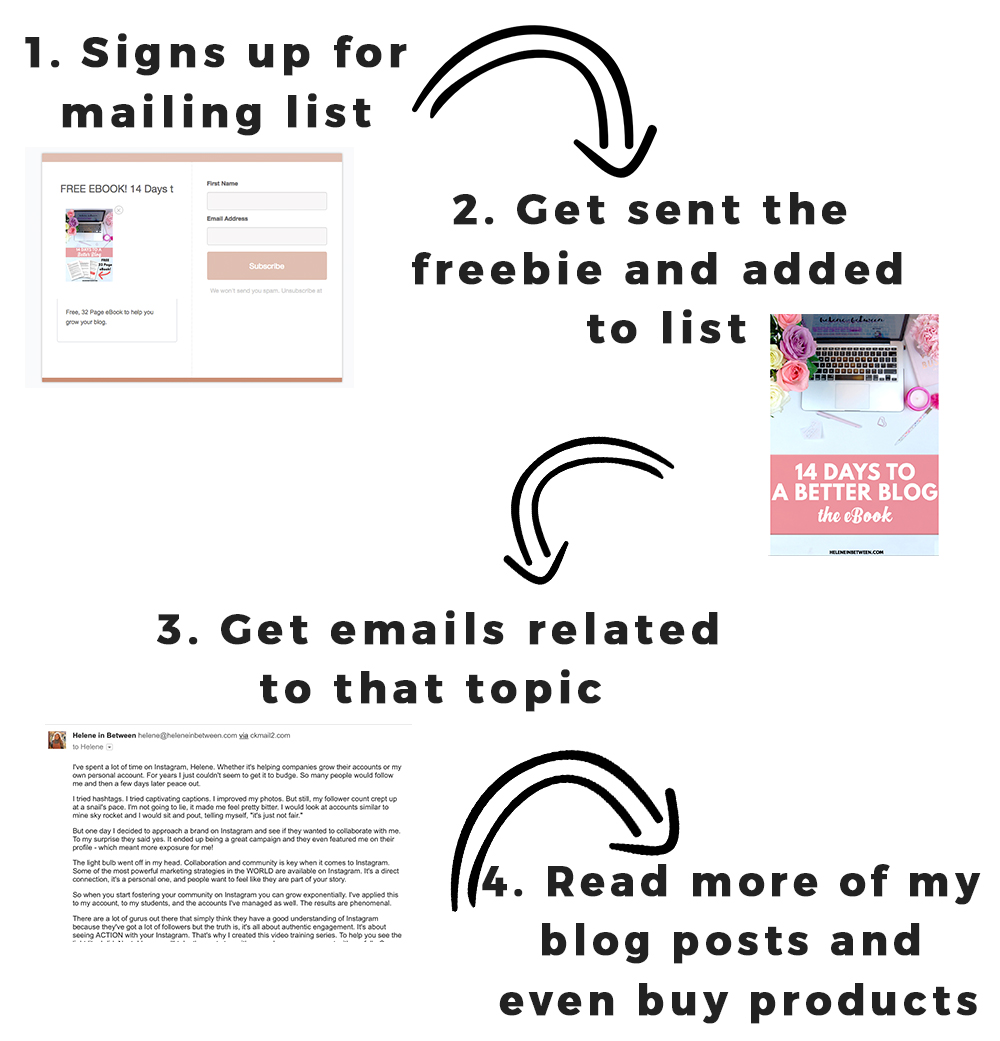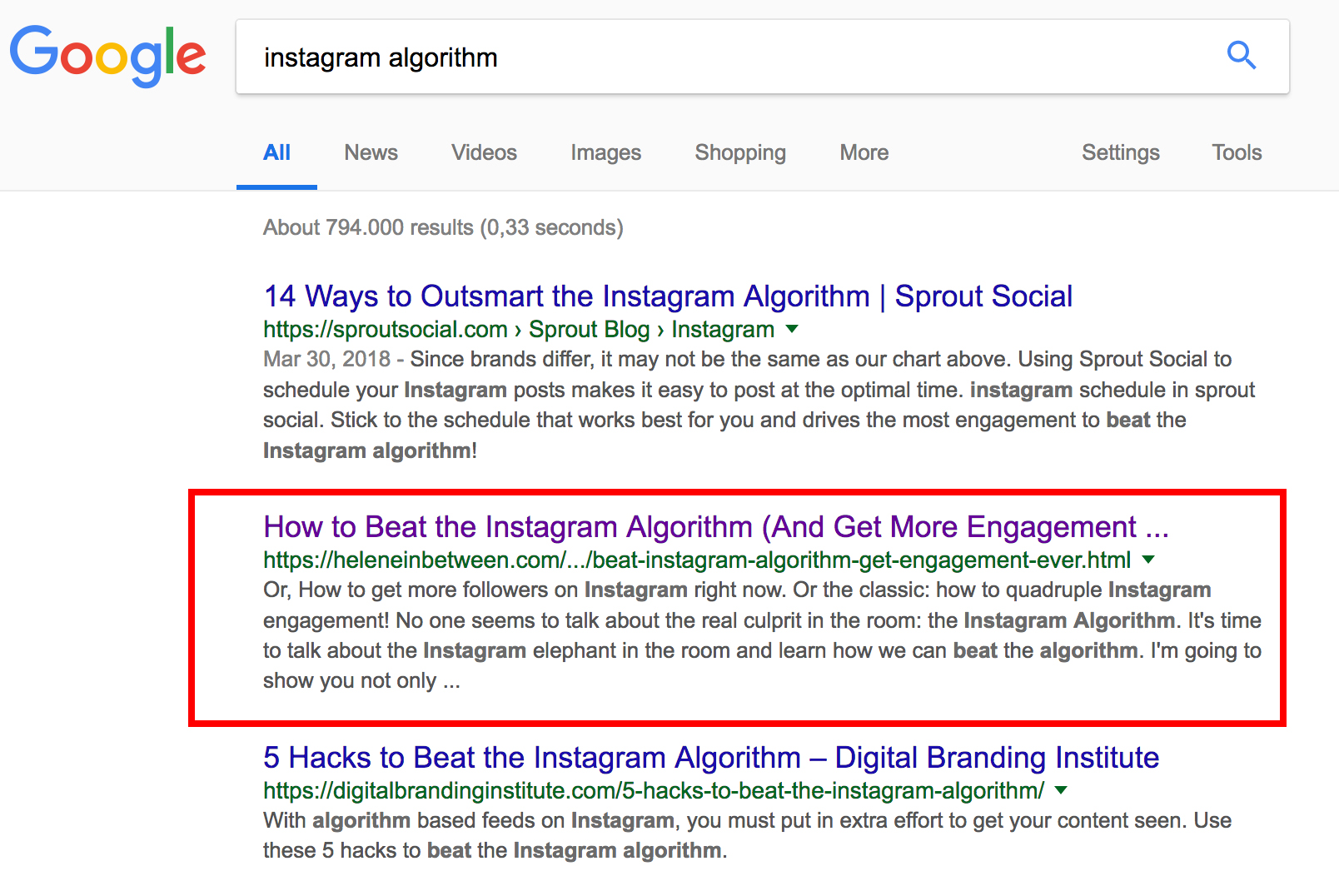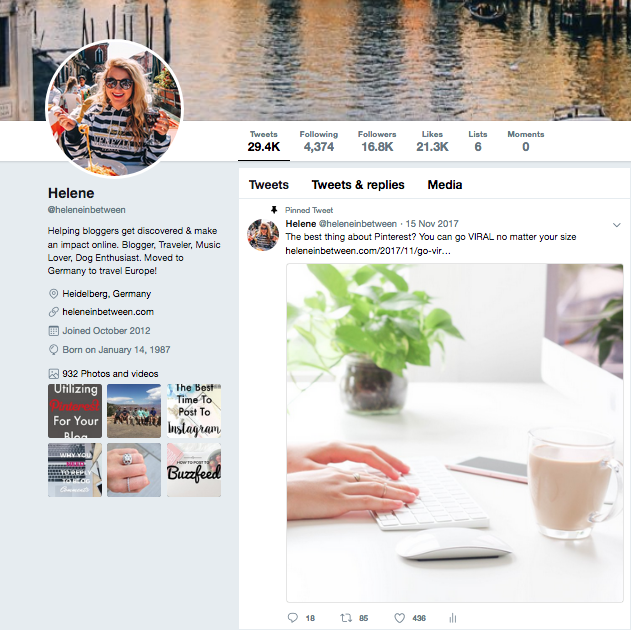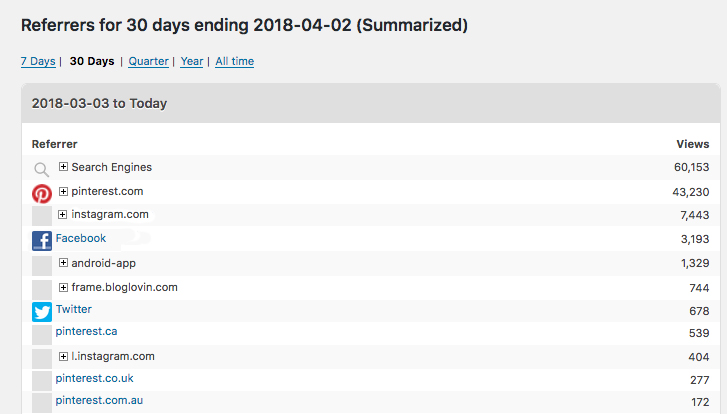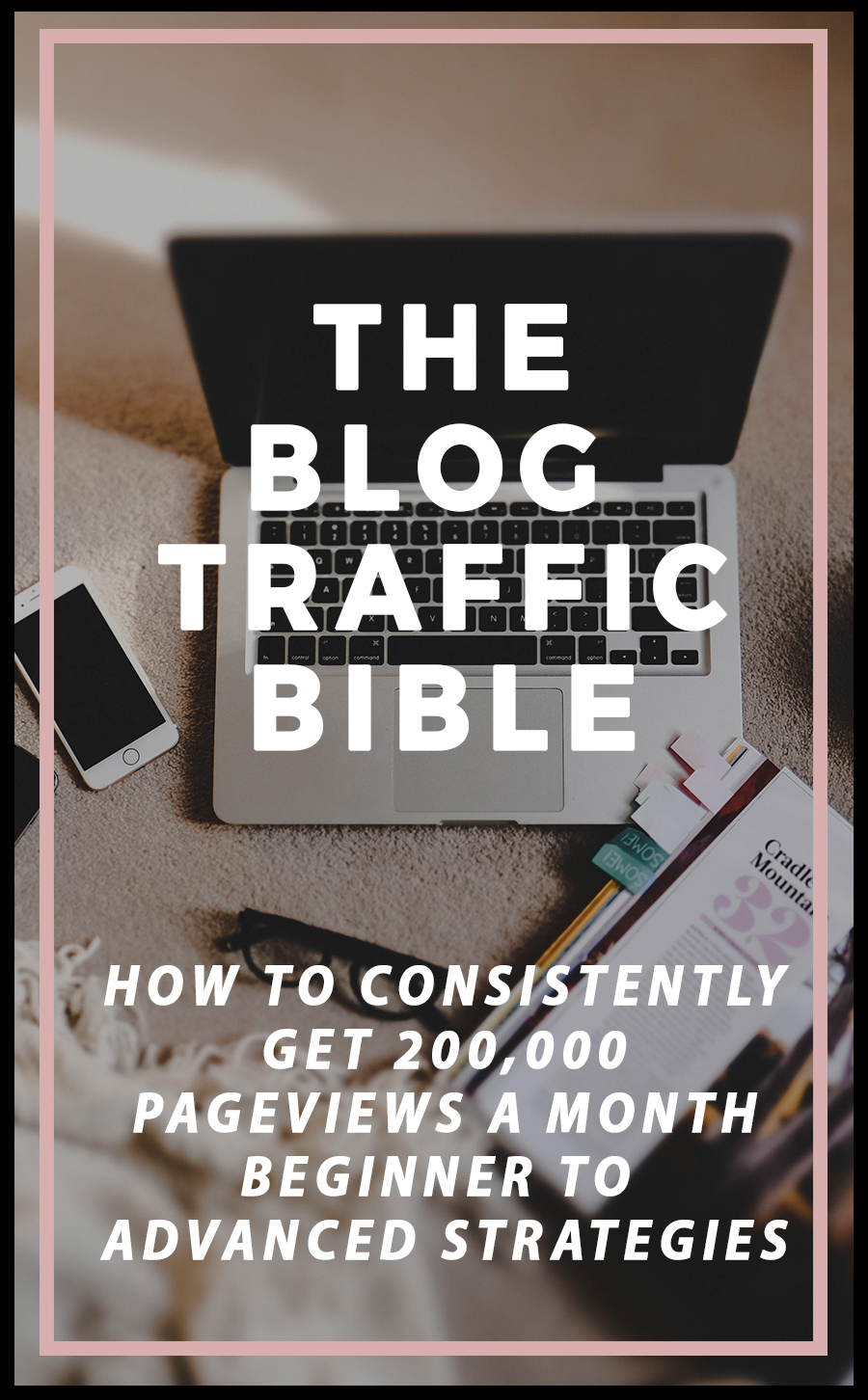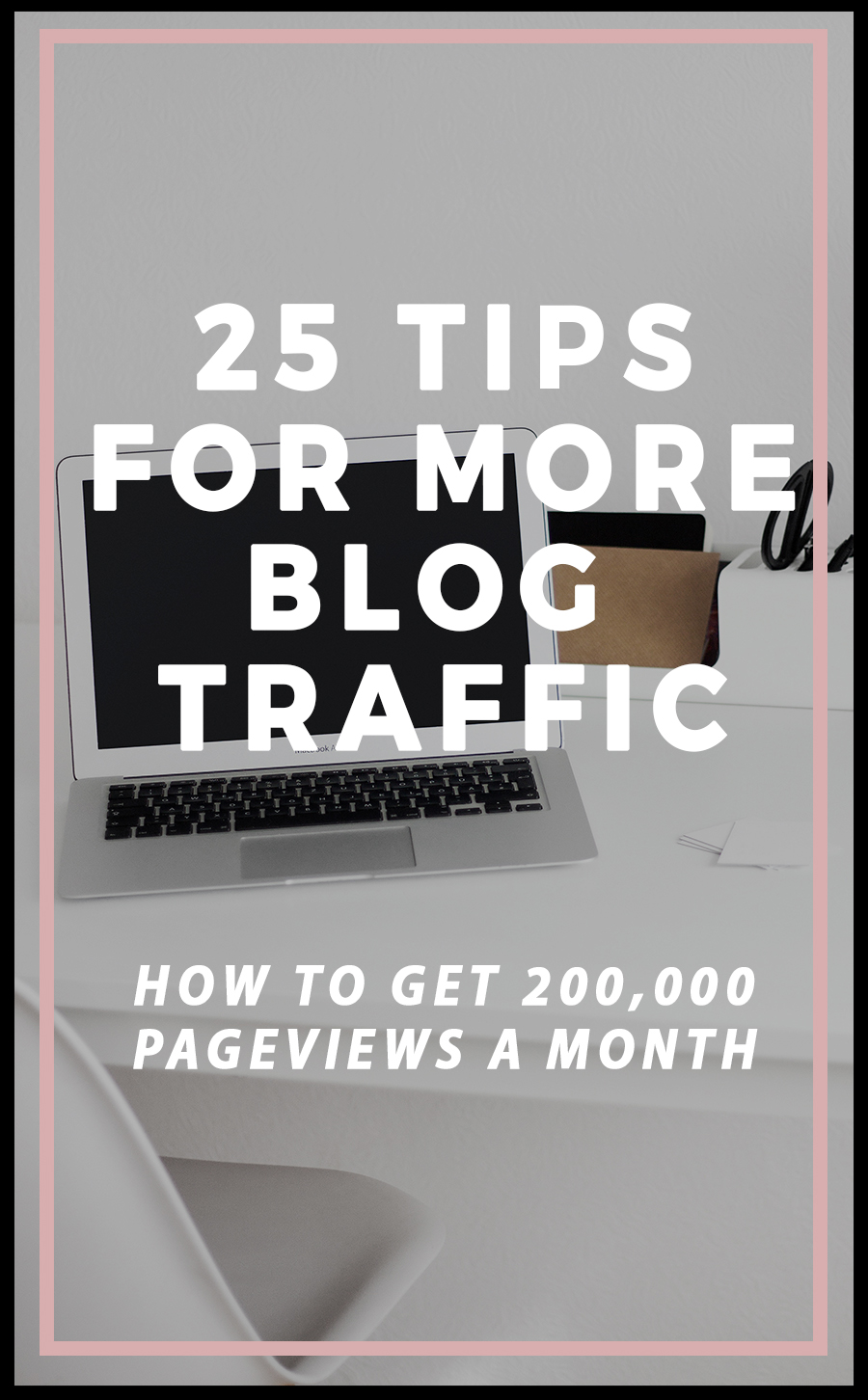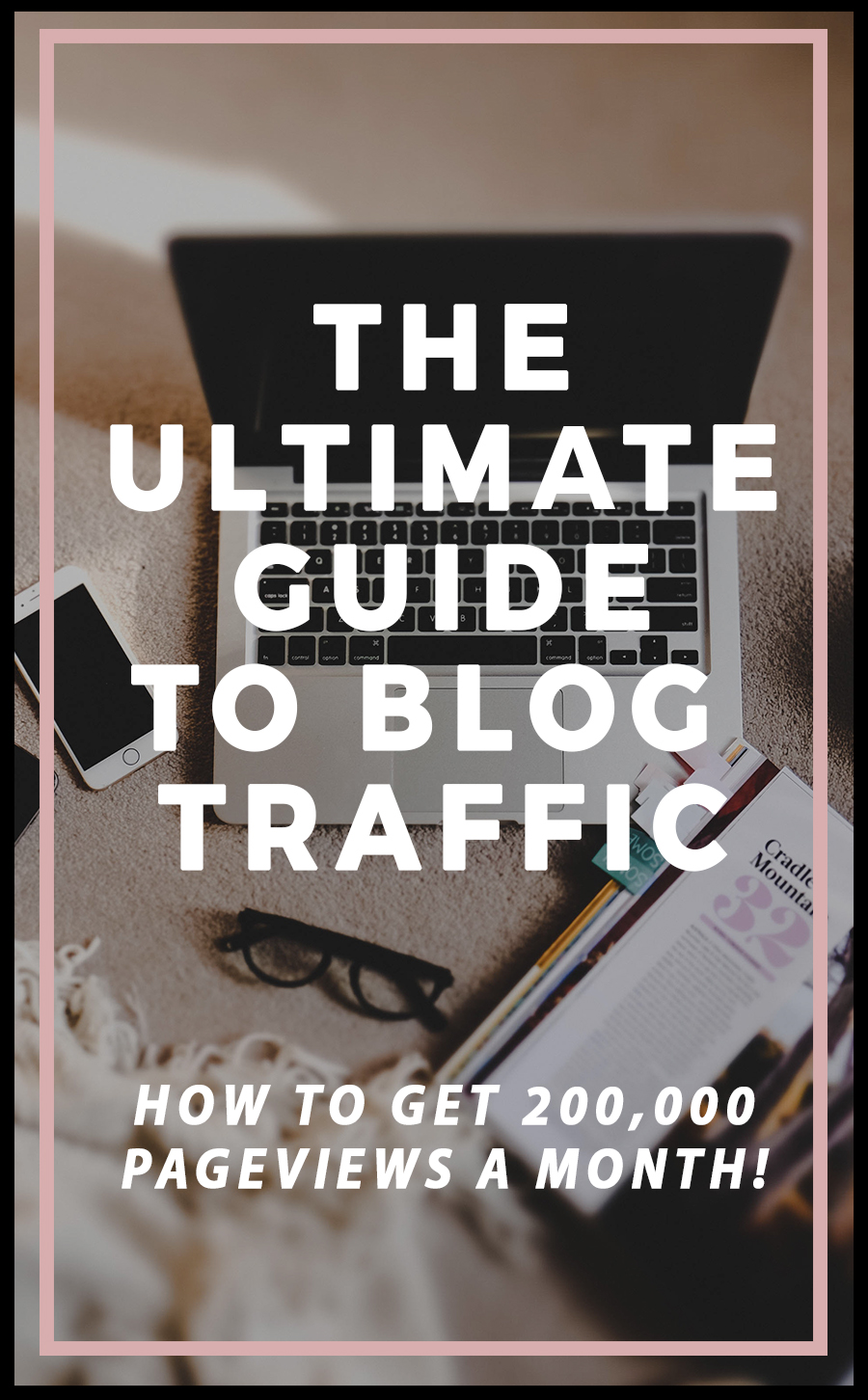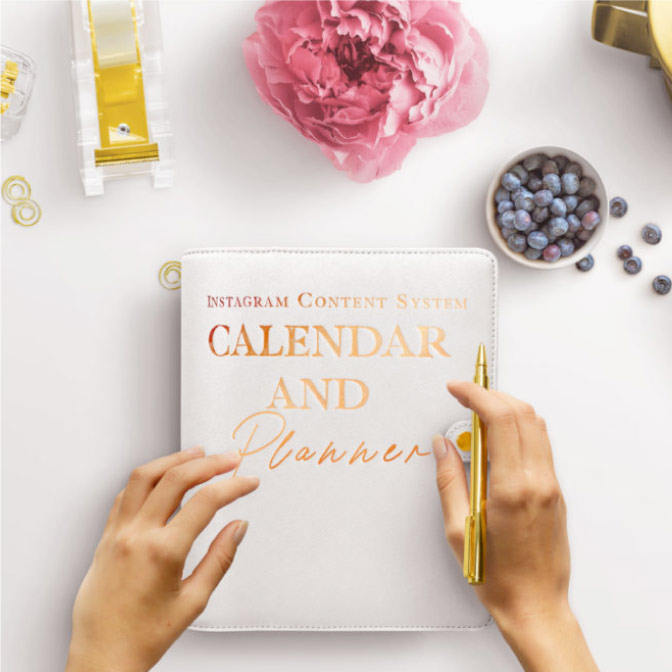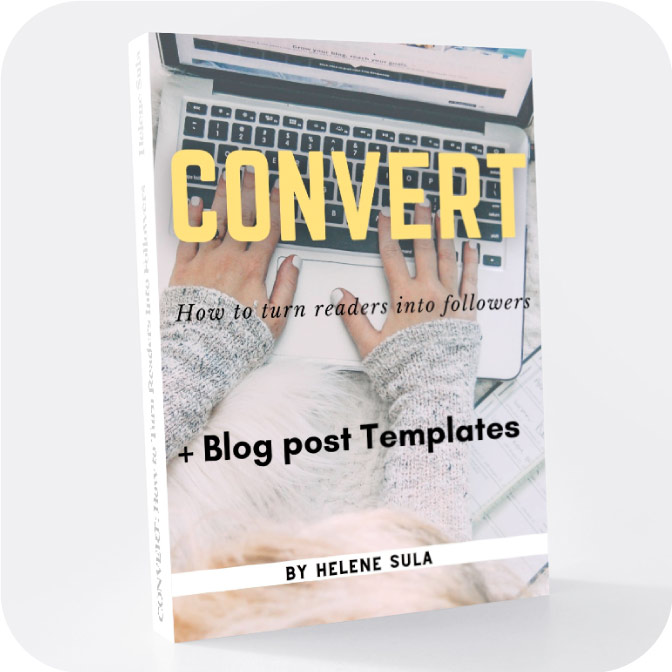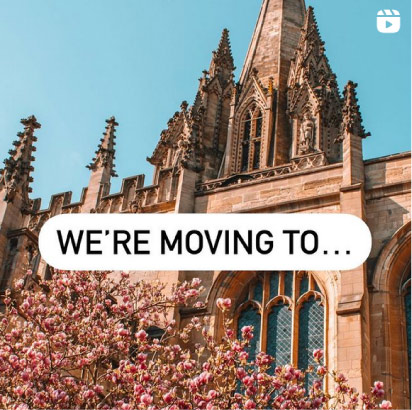I've been blogging for more than six years now. But it wasn't until just seven months ago that I really started honing in on my blog traffic. I'd been sitting around 130,000- 150,000 pageviews every month, and now, I'm solidly reaching 200,000 pageviews every single month. This ultimate guide to blog traffic will show you not only how I consistently generate 200,000 pageviews every single month, but how you can get more traffic to your blog for YEARS to come.
Why should you care about pageviews? Not only have my pageviews increased, in doing so I've gained more followers and made more money from my blog. But getting and keeping traffic on your blog requires a plan. And I promise, having more traffic is worth it and is part of the reason I was able to quit my job and blog full time.
The bane of every blogger's existence is more traffic. Anyone can start a blog, but not everyone can generate the traffic it needs to survive. In this over-saturated industry of flashy Instagram pictures we're often too focused on growing there. But remember a blog is something you have control over. The algorithm of your blog won't change. And your blog is keyword focused so this means it can be found for years and years to come. The written word is still king online, and the fact is it is one of the best ways to bring in a side or even a steady income.
Most people want to generate more traffic to their blog. More readers equals more followers (including on social media), more subscribers, more traffic, and of course, more money. I'm a full-time blogger and I can tell you if I practiced these strategies years ago I would have been able to quit my job a lot sooner. The reason that I'm able to be a full time blogger and make a consistent income is because of blog traffic.
I am going to break this down into what you should do, no matter what stage you're in. I urge you to read every single step – no matter what phase you're in, because we can all use a good ol' fashioned boost to traffic.
The Ultimate Guide to Blog Traffic
Now you might be thinking: did you post more? Nope, in fact, I posted less. Did I spend thousands on advertising? No, but I will be upfront that I do spend a couple hundred dollars a month on Facebook ads. That's part of my advanced blogging phase and we'll get to that. But I'm not going to tell you that you must spend money to grow your blog. In fact, you can do almost all of these without spending a single penny. I'm determined to help your blog grow, so let's get to it.
Psst, if you haven't started a blog yet this step-by-step guide will help you on your way.
Beginning Blogger Phase
So you're new to blogging, restarted your blog, or just wanting to see how to scale your traffic? The beginning blog phase can feel daunting and overwhelming. There is just so much to do! But my advice is to breathe. Enjoy this process and know that you will learn as you go.
Build content.
In order for you to keep getting traffic you need to create content. I'm not telling you to churn out two posts a day. But I will tell you the more content you have the more likely you are to be found. The way a search engine works, like Google, is that it crawls a web page to see what it writes about. The more you have on your site, the more it can crawl your page and display you as a result when people search for terms related to your posts. Think about it this way, the more you know about a friend, the more likely you are to bring them up in conversation. The same goes for search engines.
Forget about niches.
Now I know I told you that you need content, but what kind do you need? I suggest focusing on creating blog posts that YOU want to read. I don't subscribe to the notion that bloggers should pick one subject only. In fact, many bloggers do extremely well and write on a variety of subjects. So, forget about choosing a niche and focus on writing quality content. Write content that YOU would want to read and share.
Link to related posts.
Now that you've started to create blog posts it's important to link back to the relevant posts you've written. This is called interlinking and is a great way to develop your content and build direct connections with older posts. I also suggest linking to other bloggers within your work. This helps to create authority, not to mention they might start to notice this and link to you or share your posts. I know when I see that someone mentions me I am more likely to follow them or link to them on my site. This helps to build a connection which another important aspect of creating a high traffic blog.
Keep in mind, interlinking is different from backlinks. Backlinks are the links back to your webpage. So, when another post links back to me, that is a back link. I'll be talking about SEO later on, but that's what helps grow your blog as well.
Develop your voice.
So many people worry about growing their traffic but forget they have to develop their unique style. Having a voice on your blog is just as important as the blog design itself. Your voice is your brand. It's your signature. It's how people know it's you and not some computer generated robot. Look, anyone can write a blog post. What makes yours different is your story and perspective. For the love of traffic, please let that shine through.
Creating and honing in on your blogging voice takes time. Keep focusing on who you like to read, continue writing, and add your own style of pizazz to your posts.
Collaborate and comment.
Building relationships with other bloggers is essential. Not only is it wise to have someone to chat blogging with, it helps to widen your audience when you share about one another. If you're stuck on how to reach out I've got 18 ideas along with how to reach out and collaborate, but keep it simple. Focus on how you can help that particular blogger or share what you may have in common. A great way to do this is by commenting and interacting on social media. First and foremost, commenting on other blogs helps to grow your own blog. As you comment bloggers start to notice that you are responding and interacting.
Write great headlines.
You just wrote the greatest blog post of all time. Congrats! But the article is titled: Great Blog Post. Guess what? No one is clicking on that. I know you just spent hours, possibly days, even weeks creating this epic post. But you need to figure out how to sell it. You must grab a reader's attention. You can do this in a variety of ways and in your own style. Keep people guessing, shock them, give them must-have information. Bottom line: hook me! Part of creating great content is the headline that draws people in.
Guest post
No matter what stage you're in, it's a good idea to guest post on other sites. To do this, make a list of bloggers you might want to guest post on. You can do this by searching Google on topics you'd like to write on or similar areas of interest. Find out what the process is for submitting a guest post. Pitch them with a clear idea and objective for what your post will be about. Set a deadline and follow through on your promise. For example, as I was transitioning to write more and more about travel, I knew I wanted to write on Travelettes‘ site. I researched how to submit a guest post or article and then pitched my story. This article brought in loads of traffic and new visitors to my site.
Intermediate Blogger Phase
Now you've got some posts and traffic under your belt. You might have some comments rolling in and a steady incline of followers. Let's take that traffic to the next level.
Extremely easy to understand menu or navigation.
You want people to land on your site and be able to clearly and easily find what they are looking for. A high traffic blog needs to be easily searchable and direct the viewer to where they should go next. I think a great layout is the blog Solo Sophie, a travel blogger. She easily shares where to find different travel content for her readers. I also think The Skinny Confidential has a beautiful and easy to understand navigation. Despite talking about a variety of subjects you're able to find exactly what you're looking for when viewing her blog.
Create evergreen, long form, foundational content.
I've never had anyone tell me my blog posts are too long. Not once. If you're creating a blog post that is purpose-driven and valuable, people will appreciate it and share it. This builds authority for the content you share. When it comes to SEO (more on that below) the longer content-rich blog posts perform better because you have more keywords and more specific answers for those that read your posts. Again, we need high quality blog posts. Not a bunch of fluff.
Foundational content, as I like to define it, is your cream-of-the-crop work that you can share for years to come. It's your unique content that's written in your voice, with your own spin, and helps break down the pain points your ideal reader might have. An evergreen post is one that contains long-lasting content and can continued to be read and shared. For example, you might write: “10 ways to boost blog traffic”. These won't change or differ from one year to the next. Or, you can write: “easy chocolate cake recipe”. A post that isn't evergreen is one that is centered on a particular date or trend. Such as, “how to write a great blog post in 2018”. I'm not telling you not to write those. But do absolutely create a few pieces of foundational content that you can share for years to come.
Create an email list.
An email list is one of the best ways to have some control over ensuring your audience sees your work. But more than just eyes on you, it's also the best way to hook people you know are interested in what you have to say. The best part is that you don't need a big email list. Instead, we want to focus on our ideal readers and ensuring that they are on our list. An email list or newsletter are the people that sign up when you give them a call to action. Maybe they want updates, found you through social media, or are interested in learning more. I like to structure my email list based on their interest. based on the blog posts you write. For example, if you write about “blog post headline ideas” and a reader signs up for your email list, you know they are interested in more articles about blogging or growing online.
A great way to encourage people to sign up for your email list is to give them a reason. Don't just tell them to “sign up here.” Instead, entice them with the knowledge they will gain or a benefit of signing up. You can also guest post on other sites and include a link to sign up. Use it on your social media. And, of course, on your blog. I recommend using Convertkit for my newsletter provider because it was built by a blogger for bloggers. You can see my detailed guide to set up a newsletter here.
Reshare old posts.
The truth is that sometimes a blog post dies. It might be brilliant but it just didn't have that staying power you thought it would. I suggest you go back to that post, rework it, and then by all means, reshare it! Let's say you've got a great post. You work hard to share it for a day. Then what? You just hope and pray that others will find it. NO! You've got to take matters into your own hands and reshare it across social media.
Now let's say you have a good post but you know you can make it great. Now, you can edit it, maybe include a brand, sparkly new Pinterest graphic and, you guessed it, reshare it.
Blog Post Promotion Schedule

See exactly when to share, what, and how often!
Create great graphics for your blog posts.
Pinterest is a huge driver of traffic to my blog. That's because it acts more as a search tool than a social media platform. The best way to get more eyes on your pins is to create eye-catching graphics. I recommend creating a recognizable theme for your pins. That can mean a variety of things but this can be the colors you use, fonts, photography, etc. Take a look at my pins:
You can see they are all branded similarly. This is because it helps to create recognition with my pins. Depending on what you're writing about I suggest having at least ONE graphic with text over the top that is a long rectangular shape (736 X 1104 or 600 X 900 is optimal). Just like with Instagram, you want to maximize your space on Pinterest and using this size works best. Start creating your style and you will find what works before for you. I'll be breaking down each social media platform later in this post.
Have a clean, branded blog design.
The way your blog looks and flows is a new reader's first impression of you. Before they even read the title of your post they are looking at the aesthetic of your blog. If your font is hard too read or they are bombarded with popups, chances are they might leave. The design elements of a blog do not need to be expensive or over the top. My own blog design is from a template I found here. There are many options on Etsy and Creative Market that are lovely and inexpensive.
Understand your audience.
One of the keys to blog traffic is to keep your same readers coming back for more. I'd much rather have a reader that visits regularly than constantly trying to get new traffic. Of course, to do this you need trust. But you also need to know who you're talking to. Who is your audience? The best way to do this is actually just write it out. Dream up your ideal reader. Think about what they are interested in. Their hobbies, age, location, interests, passions, etc. Be as detailed as possible.
When you have an understanding of who you're talking to then you know what kind of content to share, how often, and when. I like to write down the questions I get because it helps me formulate blog posts and see where my readers have pain points. Another great resource is Pinterest, Quora, and Answer the Public for coming up with blog post ideas. I've also listed 75 ideas here.
Invest in a course
I've talked about this a lot on my blog but investing in yourself is game-changing. Taking a course truly helped me understand what was working and what didn't on my blog. I learned about things I didn't even know existed and it helped me to not only create more traffic but more income as well. I've certainly made every cent back from the courses I've invested in (I list out the ones I've liked here) and I know it's helped me become a better blogger. There are always things we can learn, no matter what stage we're in. The internet is a wonderful resource. But courses provide a streamlined and step-by-step way for you to achieve your goals while helping you foster a community.
Advanced Blogging Phase
If you're an advanced blogger you might be making money with your blog. You are consistently posting (remember, that does not necessarily mean every day or even every week!) and you have a reader base that cares. Now it's time to hone in on strategies that will work.
Create a freebie.
A freebie or a lead magnet is how you convert a reader into a fan for life. When you write a great blog post you hope that someone might share or follow you. But when you can take it a step further and add them to your newsletter or mailing list, this is where the magic happens. A freebie can be a checklist, eBook, webinar, download, or email course. When someone opts in to your freebie (meaning they give your name and email) in return they get the freebie. This is essential to make the freebie relate back to what you talk about on your blog.
For example, a travel blogger might share her favorite travel credit cards for rewards. A recipe blogger might share a free meal plan.
Why do this? Now that you have them on your email list you can send newsletters or emails about relevant posts related to those topics. This, of course, equals more traffic. And eventually can also lead to more money.
Create funnels.
Now that you have your email list and your freebie, it's time to start creating a funnel. A funnel takes a reader from point A to point B based on what they clicked. Let's use an example of a blogger who writes about travel and shares a freebie on credit card for reward points. Once someone signs up for that freebie the next step would be to send them an email in a few days with other, similar blog posts about travel or saving money on travel. Maybe you have a blog post on booking cheap flights. Then you can send them an email talking about this and linking to that post.
A funnel can be made in all of the major newsletter platforms out there. I personally use Convertkit and this is how it works. Let's take my “14 days to a better blog” ebook. Someone signs up for it. They get added to my mailing list. And then they get dedicated emails related to that topic.
You can even create a funnel that relates back to a paid product and affiliate links. For example, that same travel blogger might offer an eBook that talks about her favorite travel hacks to save $1,000s on travel. She can have a few emails down the line in the funnel that then link to her eBook.
Utilize SEO to drive traffic.
SEO, or search engine optimization, can feel overwhelming. But the key factors are that you are creating content around keywords so that your posts can be found online. If you write a blog post called: “How to Get More Blog Traffic” chances are this is going to be a very popular keyword phrase. So we need to change this up. Such as: “5 Key Ways to Bring More Traffic To Your Blog Today”. Or: “Simple Tricks to Generate More Blog Traffic Regularly”. The idea is that we create our own unique set of phrases. Then we use those keywords throughout the post. These are called longtail keywords. Keywords like: traffic, pageviews, blog posts, etc. This will help us more often be found online.
Search engine results are going to differ for each person. That's because Google looks at your search history when making suggestions. The more specific keywords you use, the more likely to be found online. For example, a fashion blogger might write about “the perfect outfit for Italy.” But a long-tail keyword, meaning a more specific phrase, might be, “the perfect dress for the Amalfi Coast.” Why use this? This specific keyword is more likely that YOU will show up on Google because the other is too broad and you will most likely get lost in the mix.
The process of SEO is actually more simple than many make it out to be. Focus on a strong long tail keyword (meaning the word “blog” is very hard to rank for on Google but the word “healthy lifestyle blogger” are longer and therefore easier and better to rank for) and write high quality content around it.
I wrote a post on beating the Instagram algorithm and many times come up first or second in search results on Google for the keywords I used in this post. This means thousands more hits to my site and a huge influx of traffic and new readers.
A good way to figure out what keywords to use is Google Keyword Planner. I personally prefer to use the very robust platform called SEMrush to find great keywords. Remember, SEO doesn't mean you have to ruin your writing to try and fit in the keywords. I suggest working first towards your voice, then focusing on SEO. Here's a tremendous guide to SEO.
Create viral content.
Viral content is the kind that blasts your traffic up and brings in continuous pageviews to your blog. So, what is viral content? Studies show that longer posts – those that are 3,000 – 10,000 words go viral. I know that sounds like a lot. And it is. It's not something you could possibly do every day or even every week. But it's content that helps people, plays on emotions, is polarizing, or engaging. When blog posts are helpful or insightful they are more likely to get shared.
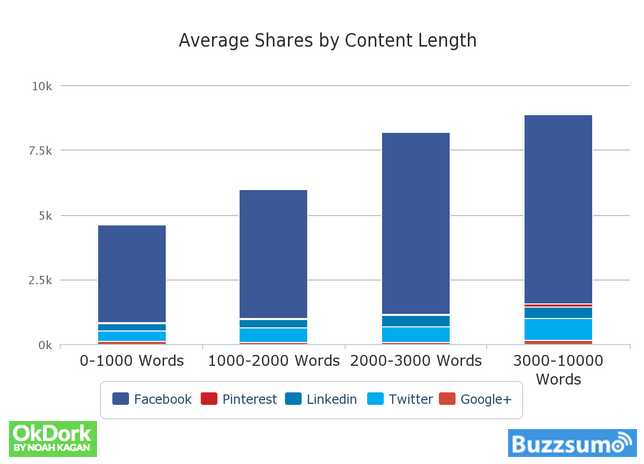
Advertising.
I use advertising to target my posts to people who might like to read them, plain and simple. I most often use Facebook advertising to do this because I can target users based on key factors related to my blog posts. For example, if I have a blog post on “travel hacks for females” I can target people's interests in travel, locations, other groups they are part of and other pages they like. It's a great way to ensure I'm reaching the right audience. AND, it's a great way to convert new readers to my blog.
Social media
Social sharing isn't easy. It might look like it is, but there are different ways to share on each platform. But once you get the hang of what works for each one it can be a blog goldmine. I find a lot of my traffic from social media. Look, we need to utilize every possible outlet to share your blog posts. You don't have to be annoying about it. But you should use them for their intended purposes. Social media is a great way to grow your blog. Let's go through a few of the top social media platforms to bring in more traffic to your blog.
Many people (including myself) have a love-hate relationship with Facebook. That's because Facebook seems to keep making it feel that in order to succeed you must pay to play. That means, advertising or boosting a post in order for it to be actually seen by your audience. While some of this is true, it still remains that a blog post can take off with the power of Facebook. We also want to give people the option of sharing our posts with their own audience and friends on Facebook. For example, let's say your Aunt Mildred is reading your post. She loves it and wants to share it. But she doesn't have Twitter or Pinterest or Instagram. She most definitely has a Facebook.
I truly believe in making sure all options are available to ensure people can share your work. The more shares, the more eyes on your brilliant blog posts.
Facebook isn't my strongest area of expertise, but I find loads and loads of traffic by using Facebook groups. This is a great way to connect and collaborate with the online blogging community. Here's a list of 75 Facebook groups that you can use to help grow your pageviews.
I've already discussed a bit about Pinterest above, talking about creating great graphics and creating a branded theme. But how can you optimize Pinterest to work for you? I like to schedule my pins on Tailwind (did I mention I'm a huge fan of scheduling?!) and ensure each Pin has a keyword rich description. Not too long ago Pinterest opened up the option to use hashtags. As for best practices, I've read the optimal number to use is 5.
The main thing I focus on for Pinterest is making sure I have boards that fit the categories I write about. So I have boards on: travel, blogging, making money, social media, Instagram, Europe, and fashion. Just like my blog isn't stuck in a niche, Pinterest allows me to Pin and discover all different types of content in different categories. And just like every social media platform, Pinterest has its own algorithm. You're shown pins based on: what you already pin, the keywords, and how often the pin is repinned. So a way for you to drive traffic to your blog is to make sure you're using clear graphic, keywords, and now hashtags. Of course, staying active on the platform is a great way to keep getting eyes on you.
Like it or not, there are over 200 million active users on Twitter every month. This means that there are users out there that want to hear from you. What I love about Twitter is that it's so fast paced. I can share multiple times a day without feeling like I'm irritating my followers. Make sure you fill out your profile entirely with a picture, description, and link to your blog. I also recommend “pinning” a tweet to the top that relates back to your blog or has a high retweet count. This establishes authority and also encourages more people to click on your link.
Here's an example of my pinned tweet on my Twitter profile:
Twitter is a great way to start a connection. So retweet others, start a conversation, interact. It's always a good idea to relate to others on social media. Follow people you like and make sure to let them know you did. Another way to do this is to share their work as well. I know I more often than not follow those that share my blog posts.
To me, Instagram is the ultimate community. You have one of the best spaces to share your work and start conversations with others. For me, I find that creating a community here is a great way to drive traffic to my blog. I utilize every aspect Instagram offers to share my blog. I talk about it in a new post. I share it on the link in my profile. I also use the “swipe up” feature to encourage people to read my blog posts who are watching my Instagram Stories.
Use hashtags relating back to the image you shared or your blog post topic so you can be found by others searching and using those hashtags. Remember, hashtags are similar to keywords, it's how you're found on Instagram.
I find the keys to Instagram are having a theme, posting consistently, and understanding the Instagram algorithm in order to make sure your posts are seen.
Check out lots more posts on social media here.
How I Consistently Generate 200,000 Pageviews Every Month
As I've said I've been blogging for years and years. I've had luck with some posts go viral and it resulted in a blip of traffic and then it eventually went back down. While that viral content was exciting, I wanted a way to steadily bring in traffic to my blog. This steady traffic, I believe, is the key to success. After all, more pageviews means more followers and buyers. Back when I first started blogging I published at least 5 days a week, sometimes on weekends, and thought that the more content I had the more pageviews.
While content does help with pageviews it's not even close to necessary to publish that often. What is important is to create quality content consistently. Personally, I love writing. If I had the time I would write more. But since I don't, I manage to publish 2-3 articles per week. This gives me the time to make sure I'm writing an in-depth piece and leaving me enough time to focus on sharing my posts.
A couple years ago I would write great articles then would get so discouraged when I found that they fell flat. I assumed that as soon as I hit publish the heavens would open and I would be blessed with thousands of hits. It doesn't work like that. You need to share your work, strategically. I came up with a sharing schedule that ensures my posts are seen for weeks, months, even years to come. You can download my tool and guide (FOR FREE!) that I use each and every day. Right here:
Blog Post Promotion Schedule

See exactly when to share, what, and how often!
Next, I focus on the sources that work best for me. Instagram and Pinterest are some of the top drivers of traffic to my blog, period. So instead of focusing on what isn't working, I put more effort into what is. I often use Instagram stories to share about new or relevant blog posts. I also direct people to the link in my bio or let them know how they can find out more about my posts with the pictures I share.
As for Pinterest, I use all the tools at my disposal. I love to schedule Pins on Tailwind (here's a guide for setting up Tailwind) and also use Tailwind Tribes. I use Photoshop (Canva is also a good option) to create a graphic that I could use again and again for Pinterest. That way when I have a new post I simply swap our the text and add in a different image and the graphic is ready to go- all with my branding.
Looking at my analytics is a great way for me to see what posts are working. If people are really digging my blog posts about Instagram, then I should continue writing posts about Instagram. Reviewing your analytics on your blog or on Google Analytics will help you pinpoint what interests readers most, the best day and time to post, and where your audience is coming from.
As you can see my traffic sources are search engines, Pinterest, and then Instagram. I tend to focus significant efforts to make sure that I keep traffic coming from these sources by posting consistently and frequently to both.
My last strategy for pageviews on my blog is to keep the conversation going. For example, when I was writing out this post I realized I don't have a blog post to link to about my Facebook group strategy. Whenever I'm writing and I feel like I need to do some more explaining I open up Evernote “blog ideas” note and start scribbling out the ideas I have. I try to look through the article I just wrote and see where are there holes? Where could I fill in the blanks to make it easier for people?
How much traffic does a blog need to generate $100,000 a year?
Traffic is, of course, a key factor in monetizing your blog. But you can still monetize your blog no matter how many pageviews you have. The key is to combine your excellent content, serve your audience, and give value over time. It took me years to make $100,000 in one year from my blog. But if you break it down into smaller chunks, you need to make $8,333 a month from your blog per month in order to hit the $100,000. And I believe the best possible way to do this is with traffic.
Getting traffic to your blog isn't just about writing the most incredible blog post ever. It's helping understand what your audience needs and then helping them. I try to put my readers first and think about what they might like to read. Then I write blog posts surrounding them. Then, of course, I schedule and share the heck out of them. This is my strategy to continually gaining 200,000 pageviews each and every month.
I hope this bible like entry of how to gain more traffic to your blog will help you on your way. No matter what stage you're in, your area of expertise, or what you write about, you can bring in loads of pageviews to your blog. Quality and consistency are key above all.
Blog Post Promotion Schedule

See exactly when to share, what, and how often!

